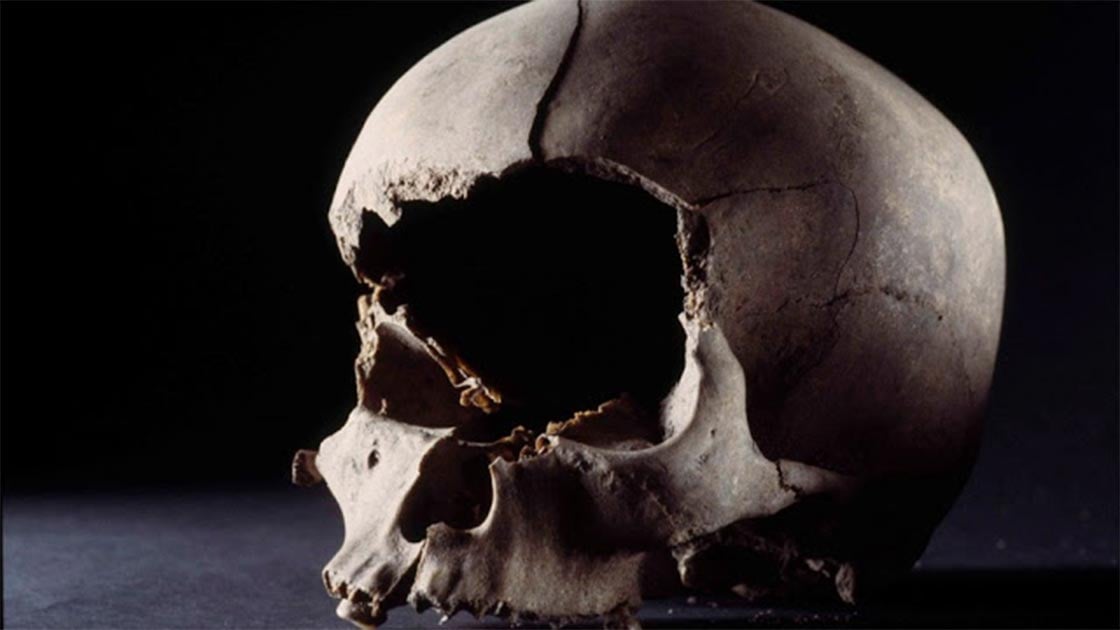De-faced Skulls and Babies Were Buried in Viking Homes
A new Viking research paper determines parts of dead Norse folk, especially children, were kept beneath homes after the deceased had been buried.
So often sensationalized, glamorized and mystified, 11th century Scandinavia was often a dark and blood-thirsty realm where the upper classes ruled by sword and flame. While the glorified elites of the Viking world were often burned in boats wooden longboats, day to day, the bodies of common Norse people were often discarded crudely, with no pomp and ceremony, and now it has become clear that parts of smashed-skulls and even dead infants bodies were buried beneath doorways and floors in homes.
Consulting the skulls of arcane universal knowledge
Archaeologist Marianne Hem Eriksen from the University of Oslo, who authored the new study which has been published in World Archaeology, said “Parts of corpses were sometimes placed around farms and inside long houses” and that this was probably not a random act. The Norwegian researcher has studied 40 archaeological fragments from skulls unearthed around greater Scandinavia dating from the Iron Age around 250 BC until about 1050 AD, which was at the end of Viking Age. And testimony to the aforementioned violence, one of the analyzed samples was the whole skull of a 25-40 year old man with its face slashed off, discovered unceremoniously dumped in a well outside a 9th century pit house in Aarhus, Denmark.
Hem Eriksen thinks Norse people placed great value in having parts of dead bodies, especially bits of skulls, close to daily life and she suggests a range of probable causes for the phenomena. Perhaps the Vikings aimed to preserve “the essence of someone who was dead” or maybe they deliberately tried to “destroy the personality of an enemy,” or the bones were maybe thought of as protecting properties and possessions against evil spirits and powers, Eriksen suggested.

Ribe skull fragment with perforation and runic inscription. (Image: Museum of Southwest Jutland)
The later idea is supported by the famous Ribe skull which was discovered in Ribe, Denmark, dating from the Iron Age. Marked with ancient runes and the names of Norse Gods Odin and Tyr a hole drilled in the top of the skulls suggests to archaeologists that it had been used as a form of “amulet to help with pain and disease,” according to the paper. This skull might be associated with beliefs regarding Norse mythology and the giant Mimir, who in the 2007 book Heimskringla: History of the Kings of Norway, was described as beheaded in the wars with gods and his skull was carried by Odin who consulted it for secret, arcane universal knowledge.
Burying Child Skulls For Social Bonding?
Regarding who these body parts might once have belonged to, the researcher says whether the bones laid down in houses were the remains of close relatives, enemies, or slaves is hard to say, but a recurring pattern was “young children, especially newborns and up to the age of one” often found in wall foundations, pits in the courtyard, and by the hearths in homes. Hem Eriksen said that in the Viking world children were perceived “as magical objects” and her research indicates it was a tradition to bury children's bodies in the house “for generations”.
- With Portals to the Dead, Viking Homes Were Stranger Than Fiction
- Viking Camp Complete with Ship Building and Weapon Workshops Unearthed in England
- More than Blood and Bling: Our Many Visions of the Viking

The skull of a woman which is split in two and laid under a house floor in Jutland, Denmark
Image: Ostergaard (2016) and Historical Museum of Northern Jutland/World Archaeology
In an article about the new paper on Archaeology News Network, Gunnhild Rothe, a historian of religion and the author of books on the Norse religion is quoted saying ”The deceased were biologically dead, not socially,” and he added that with today's thought patterns, it’s hard to understand a mentality in which "death and the dead were part of everyday life.” The scientist thinks the children ’s bones might have been considered as creating a bond between people, the houses and the place and that the same theory may apply to the skull parts.
Holding On To The Past, Today
Putting such apparently grotesque acts into historical perspective, Rothe said the past shows that we cannot take today's values for granted and that our ancestors lived in a “society permeated with violence” in which people thought entirely “differently about human dignity and the body.” And if anybody is still struggling to compartmentalize this whole idea, there are modern echoes of differing traditions, such as if we look to modern China, where according to an article in Baby Wise, most mothers keep a baby's umbilical cord in Chinese red packets, or a small box so they can hang on to it longer.
Before a rush of readers blast that last part and refer to the 2017 Harvard paper urging mothers to “keep their umbilical cords” because the left over blood has special cells in it that can treat and even cure some serious diseases, the big difference here is that in the later instance the cords are held in scientifically observed, cryogenically frozen capsules in labs, not wobbling for endless years in shifty mass-produced wooden boxes on mantle pieces, serving only to gather and spread “diseases”. (Face palms)
Top image: The skull of a man, 25-40 years, with his face cut off with a sharp weapon. The head was found in a well outside a pit house from the 9th century in Aarhus, Denmark. Source: Rogvi N. Johansen/Moesgaard Museum
By Ashley Cowie



















